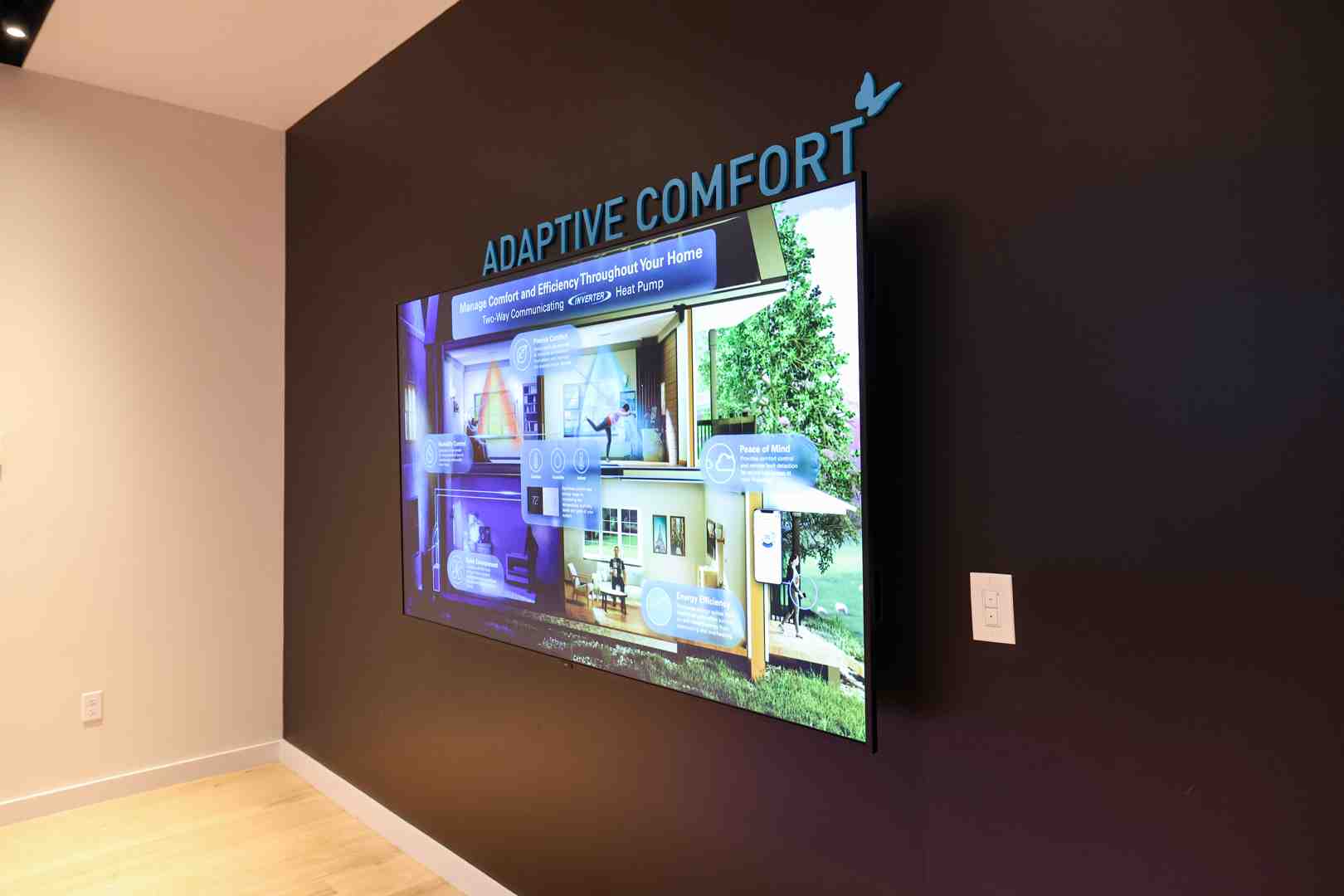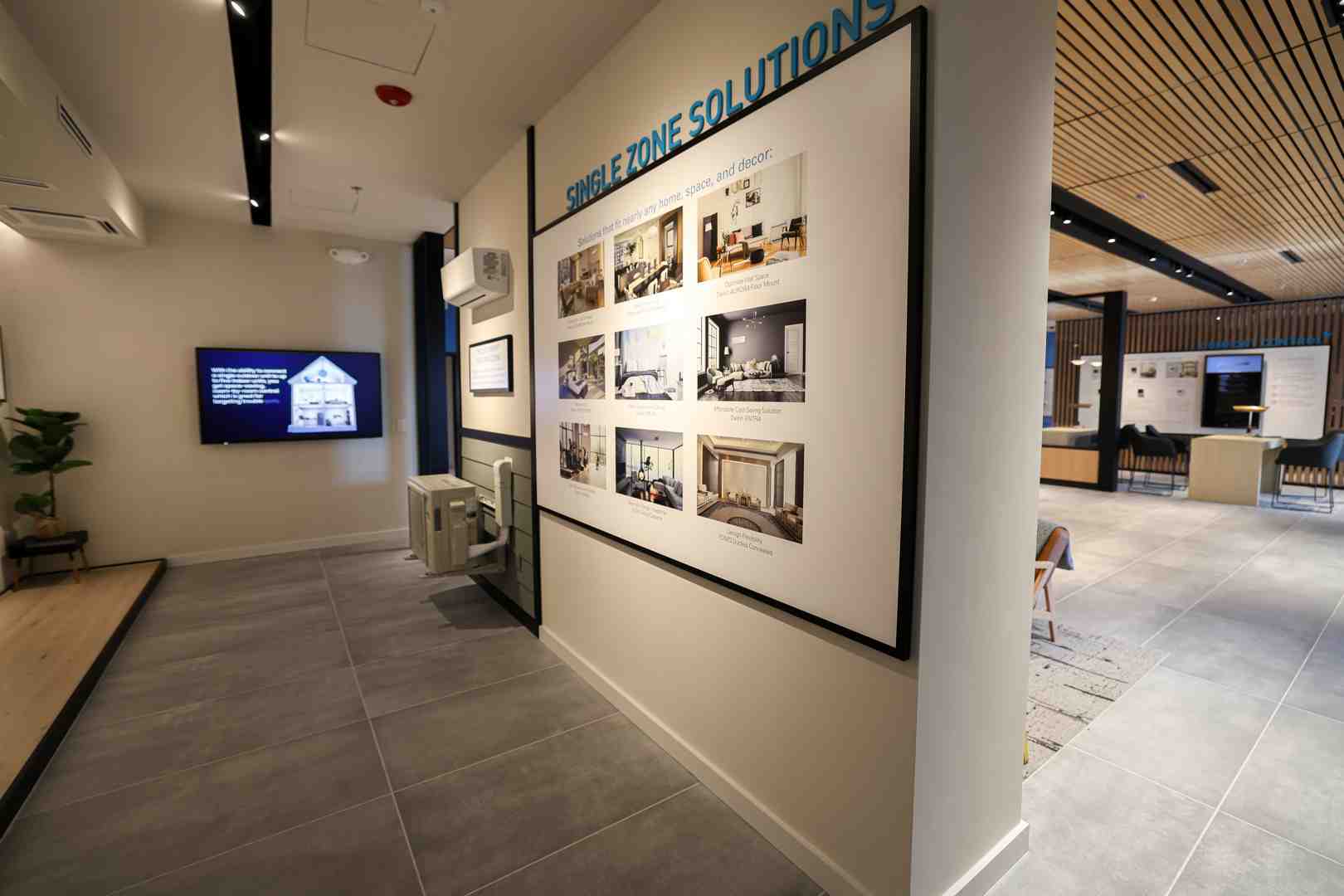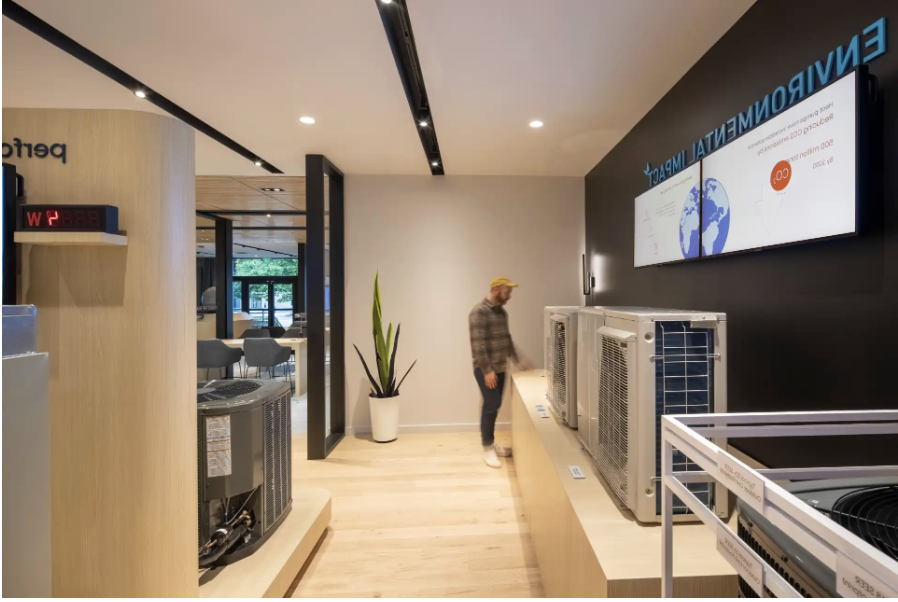HVAC Decarbonization Seattle WA: 2025's Ultimate Green
Why HVAC Decarbonization Seattle WA Matters for Your Home and Our City

HVAC decarbonization Seattle WA is the process of replacing fossil fuel-powered heating and cooling systems with electric alternatives that run on clean, renewable energy. As Seattle works toward ambitious climate goals, buildings—which generate over 40% of the city's greenhouse gas emissions—are at the center of this change. For homeowners frustrated by high utility bills, inconsistent temperatures, and outdated equipment, this shift represents an opportunity to upgrade to modern, efficient technology that delivers year-round comfort while supporting a healthier environment.
Quick answers about HVAC decarbonization in Seattle:
- What it is: Transitioning from natural gas or oil heating to electric heat pumps and other clean HVAC technologies
- Why it matters: Buildings account for more than one-third of Seattle's emissions; electrification can reduce your carbon footprint by up to 90%
- How it works: Modern heat pumps transfer heat rather than burn fuel, providing both heating and cooling with up to 40% energy savings
- What's driving it: Seattle's Building Emissions Performance Standard (BEPS), Washington's Clean Building Performance Standard, and growing homeowner demand for efficient, eco-friendly comfort
- What you gain: Lower energy bills, improved indoor air quality, consistent zoned comfort, and access to rebates and incentives
If you're exploring ways to lower your energy costs while supporting Seattle's sustainability goals, learn about energy-efficient HVAC systems or schedule a consultation with our team.
The Driving Forces Behind HVAC Decarbonization in Seattle WA
Seattle has always been a city that thinks ahead on the environment, and HVAC decarbonization Seattle WA is a natural next step toward a cleaner future. This transition isn't happening by accident—it's the result of thoughtful local policies, consumer enthusiasm, and our city's reputation as a sustainability leader.

Buildings are a significant part of our city's carbon footprint, and addressing this sector is essential for meeting climate commitments. Seattle City Light, our carbon-neutral utility, champions building electrification as a practical path forward. Their research shows that switching to electric technologies could reduce regional greenhouse gas emissions by 37%. You can explore more about these efforts through Building Electrification - City Light.
Seattle residents are also driving this change. Consumer demand for sustainable solutions is growing, with about 80% of homeowners willing to invest more in eco-friendly products. Heat pump sales have surpassed gas furnaces nationwide, signaling a clear shift. This is about smart economics, lower energy bills, and better comfort. When policy support meets public interest, HVAC decarbonization Seattle WA becomes inevitable.
How Local Policies Drive HVAC Decarbonization in Seattle WA
Seattle and Washington State are implementing concrete policies that reshape how we heat and cool our buildings.
The Washington State Clean Building Performance Standard (CBPS) requires buildings over 50,000 square feet to meet energy efficiency benchmarks. This encourages upgrades to high-efficiency systems like electric heat pumps.
Seattle's Building Emissions Performance Standard (BEPS) goes further, setting carbon emission targets for nonresidential and multifamily buildings over 20,000 square feet, aiming to reduce building-related emissions by 27% by 2050. While the standard offers flexible compliance pathways, electrification is consistently the most effective option.
The city also leads by example with its Municipal Buildings Decarbonization Plan. This initiative aims to eliminate fossil fuels from 176 city buildings by 2042, cutting emissions by approximately 87%. The Municipal Buildings Decarbonization Plan - Environment provides a roadmap for replacing gas boilers with electric heat pumps, encouraging private sector adoption.
Even the University of Washington is investing in decarbonization, requesting $292.6 million in the 2025-2027 budget for campus energy projects. Plans include transitioning to hot water systems to enable heat pumps and upgrading electrical infrastructure. Learn more about how we're supporting these sustainability efforts on our Daikin Sustainability Seattle page.
The Rise of High-Efficiency Technology
The shift to low-carbon HVAC is possible thanks to practical and affordable technology. Heat pump adoption has grown dramatically, driven by innovations that make them highly efficient and reliable for our climate.
- Inverter technology allows compressors to vary their speed to precisely match heating or cooling demand. This results in significant energy savings, quieter operation, and more consistent comfort.
- Variable-speed compressors work with inverter technology to fine-tune system output. They adjust their speed to deliver exactly what your space needs, using only the required energy.
- Smart controls take efficiency to another level. Wi-Fi controls and advanced programming make it easy to maximize comfort while minimizing energy use by adjusting temperatures from your phone or letting the system learn your routines. Explore these innovations in our guide to the Most Energy Efficient HVAC Systems.
These advances deliver real-world results, making HVAC decarbonization Seattle WA both practical and economically sensible.
The Power of Heat Pumps for a Low-Carbon Seattle
If you're looking for the cornerstone technology behind HVAC decarbonization Seattle WA, look no further than the heat pump. These remarkable systems are changing how Seattle properties stay comfortable year-round while dramatically reducing carbon emissions.

Instead of burning fossil fuels, heat pumps simply move heat. Think of it as a two-way air conditioner. In summer, it extracts heat from inside and releases it outdoors. When temperatures drop, the system reverses—pulling heat from the outdoor air (even cold air has heat energy!) and transferring it inside to warm your space.
This heat transfer process provides both heating and cooling from a single, all-in-one system, simplifying your HVAC setup and slashing your carbon footprint.
But do they work in cold weather? Yes. Modern heat pumps have evolved far beyond earlier models. Today's advanced systems deliver reliable heating even when temperatures plummet to -13°F—far colder than Seattle's typical winter lows. This cold climate performance ensures you stay warm through our chilliest nights without burning fossil fuels. For more technical details, explore the Heat pump page.
Because heat pumps move heat rather than create it, they can deliver 3-4 times more energy than they consume, a level of efficiency fossil fuel systems can't match.
Ductless Systems: The Smart Choice for Seattle Properties
When implementing HVAC decarbonization Seattle WA, ductless systems (or mini-splits) offer a smart, flexible solution for residential and commercial applications.
| Feature | Ductless HVAC System | Traditional Ducted HVAC System |
|---|---|---|
| Energy Efficiency | Up to 40% energy savings; no duct loss; precise zone control; inverter technology. | Can lose up to 30% of energy through leaky ducts; whole-building heating/cooling, less efficient. |
| Installation | Quick, minimal disruption; small 3-inch hole in exterior wall; no extensive ductwork required. | Requires extensive ductwork installation, often disruptive and time-consuming. |
| Zoning | Individual temperature control for each indoor unit (zone); eliminates "thermostat wars." | Central thermostat controls entire building or large zones; limited individual control. |
| Maintenance | Easy-to-clean filters; professional annual inspections for longevity; often simpler components. | Duct cleaning required; more complex network of components; potential for duct leaks to develop over time. |
Ductless systems can reduce energy consumption by up to 40% by eliminating leaky ductwork, which can waste up to 30% of conditioned air in conventional systems. They deliver air directly where you need it.
Zoned comfort is another key benefit. Each indoor unit operates independently, allowing different rooms to have different temperatures. This is perfect for homes and businesses with varying needs, saving energy by only conditioning occupied spaces.
Ductless systems also offer improved air quality with advanced multi-stage filtration that captures dust, pollen, and allergens. This is a significant benefit for those with allergies or concerns about wildfire smoke. Learn more about these efficiency benefits on our Energy Saving Solutions Featured page.
Ideal Applications for Ductless HVAC
The versatility of ductless systems makes them perfect for a wide range of Seattle properties where traditional ductwork is impractical.
- Historic buildings: Provides modern climate control without invasive renovations that compromise original features.
- New additions or renovations: An efficient solution for new spaces like converted attics or basements without extending existing ductwork.
- Offices: Zoned control allows individual comfort preferences, boosting productivity.
- Retail spaces: Quiet operation and precise temperature control keep shoppers comfortable.
- Restaurants: Addresses the different needs of hot kitchens and pleasant dining areas independently.
- Medical clinics: Essential for patient comfort and health, offering precise temperature control and superior air quality.
Ductless technology offers the flexibility and efficiency to make HVAC decarbonization Seattle WA a practical, cost-effective reality for any property.
Implementing Your Low-Carbon HVAC Solution

Starting your HVAC decarbonization Seattle WA journey doesn't have to be overwhelming. It begins with a professional consultation to understand your space, comfort challenges, and energy goals.
Our experience with HVAC Seattle Washington means we understand how local climate and building types influence system performance. The goal is to find the right fit that maximizes efficiency and meets Seattle's environmental standards.
Key Considerations for HVAC Decarbonization in Seattle WA
When moving forward with HVAC decarbonization Seattle WA, several factors shape your system selection for long-term satisfaction.
- Proper system sizing: This is the foundation. An oversized system wastes energy, while an undersized one struggles to maintain comfort. Detailed load calculations that account for insulation, windows, and occupancy ensure the system is "just right."
- Single-zone vs. multi-zone systems: A single-zone system is ideal for one area, like a new addition. Multi-zone systems are perfect for commercial settings with varied needs, allowing independent temperature control in different areas and saving energy.
- Advanced filtration options: Modern systems offer filters that trap allergens and fine particulates, which is crucial for creating a healthy environment in medical clinics, restaurants, and other public spaces.
- Smart features and Wi-Fi controls: These tools help you optimize performance. Monitor and adjust temperatures from your phone, set schedules, and track energy usage to identify savings opportunities.
Installation and Long-Term Maintenance
Ductless installation is remarkably straightforward with minimal disruption. The process involves mounting indoor units and connecting them to an outdoor unit via a small, three-inch wall opening. There's no extensive demolition, and many installations are completed in a day or two.
Maintaining your system is also simple. Regular filter cleaning is the most important task and can be done in minutes. Beyond that, annual professional inspections ensure longevity and peak performance. Our technicians check refrigerant levels, clean coils, and inspect components to catch small issues before they become big problems.
When you combine quality equipment with proper maintenance, you're investing in a solution that supports your HVAC decarbonization Seattle WA goals while making daily operations easier. Learn more about maintaining optimal performance with Energy Efficient HVAC Systems Seattle WA.
Frequently Asked Questions about Heat Pumps in Seattle
As Seattle homeowners and business owners consider HVAC decarbonization Seattle WA, many have questions about making the switch to heat pumps. Here are answers to the most common inquiries we receive.
Do heat pumps work effectively in Seattle's cold, damp winters?
Yes, absolutely. While older models struggled in freezing temperatures, modern heat pump technology has evolved dramatically. Today's advanced systems can heat effectively even at temperatures as low as -13°F, far colder than Seattle's typical winter weather.
A heat pump works by extracting existing heat from the outdoor air—even cold air contains usable heat energy—and moving it indoors. This reversing cycle is remarkably efficient and makes heat pumps a smart choice for Sustainable Home Heating in our climate, providing consistent warmth without fossil fuels.
What incentives are available for switching to a heat pump in Seattle?
Seattle and Washington State actively support the transition to clean heating, and financial incentives are available to help offset your investment. These can include:
- Seattle's Clean Heat Program: Offers resources and support for transitioning away from fossil fuels. Learn more at Seattle's Clean Heat Program - Environment.
- Utility Rebates: Seattle City Light regularly offers rebates for installing high-efficiency heat pumps.
- State Programs: Washington may provide additional tax credits or incentives for energy efficiency upgrades.
- Federal Incentives: The Inflation Reduction Act introduced generous federal tax credits and rebates for high-efficiency electric HVAC systems.
Incentive programs change, so we recommend a consultation to understand which apply to your project and maximize your savings while supporting HVAC decarbonization Seattle WA.
How does a single heat pump system provide both heating and air conditioning?
The key is that a heat pump moves heat rather than creating it.
- In summer, it works like an air conditioner, absorbing heat from inside your building and moving it outdoors.
- In winter, a reversing valve changes the refrigerant flow. The system extracts heat from the outdoor air and moves it indoors to warm your space.
This efficient heat transfer principle allows a single system to replace both a furnace and an air conditioner, providing year-round comfort with one low-carbon solution.
Conclusion: Join Seattle in Building a Sustainable Future
We've covered a lot of ground together, and if there's one takeaway, it's this: HVAC decarbonization Seattle WA isn't some distant dream—it's happening right now, and you can be part of it.
The benefits are real and tangible. We're talking about energy savings of up to 40% with modern ductless systems, cleaner indoor air for your family or employees, and the kind of precise comfort control that makes everyone happy (no more thermostat wars!). For buildings that previously relied on natural gas heating, switching to electric heat pumps can reduce greenhouse gas emissions by up to 90%. That's not just good for Seattle's climate goals—it's good for all of us who call this beautiful city home.
The technology is ready. Heat pumps with inverter technology and variable-speed compressors have evolved into sophisticated systems that work beautifully in our Pacific Northwest climate. They're quiet, efficient, and reliable, even when the weather turns chilly. And with smart controls and Wi-Fi connectivity, managing your comfort has never been easier.
But perhaps the most exciting part is that this transition doesn't mean sacrificing comfort for sustainability. Modern heat pump systems deliver superior performance while dramatically reducing your environmental impact. It's a genuine win-win.
We'd love to show you how it all works in person. Stop by the Daikin Seattle Experience Center, where you can see and touch the equipment, ask all your questions, and get a real feel for how these systems can transform your space. Our team is here to help you steer the options, understand available incentives, and find the right solution for your property.
Seattle is building something special—a cleaner, more sustainable future that doesn't compromise on comfort or quality of life. Every building that transitions to efficient electric heating and cooling brings us one step closer to our collective climate goals. Learn more about our commitment to Sustainability and find how Decarbonization Inverter Technology is leading the way forward.
The future of heating and cooling is electric, efficient, and exciting. And it's ready for you today.

Schedule a Visit

your individual indoor comfort needs

products firsthand

with an authorized Daikin Dealer
.webp)

.webp)

.svg)
